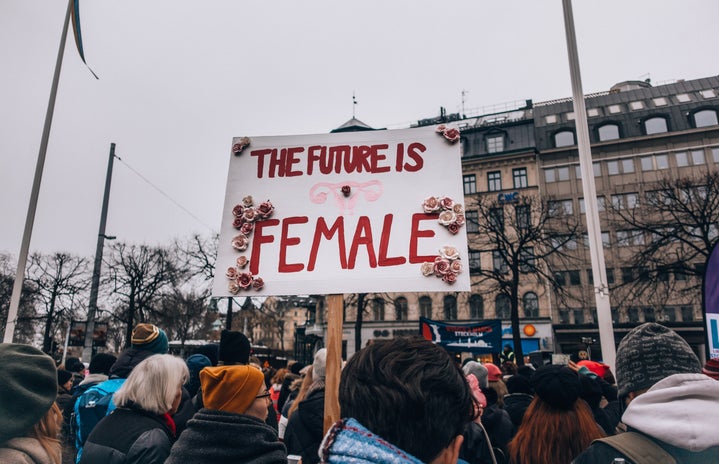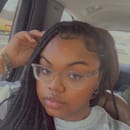Throughout school, there are a number of prominent figures we hear about often: MLK Jr., Rosa Parks, Harriet Tubman, etc. Though their accomplishments and strides for a better world are not taken for granted, there are many more men and women who aren’t recognized for their contributions nearly as often. In one of my classes this week, we were assigned a documentary entitled “My Name is Pauli Murray,” which showcased the life and challenges of activist Pauli Murray. After watching, the biggest question I had was: why have I never learned about Pauli before?
Pauli Murray was an activist who advocated for civil rights and gender rights. They were also a lawyer, author and Epicospal priest. Born in 1910, Murray grew up in North Carolina, moving to New York at 16. They attended Hunter College and graduated in 1933 with a B.A. in English. They were rejected from UNC Chapel Hill’s Ph.D. program in 1938 because they were black. Murray began law school at Howard in 1941.
Murray was one of four Black people in a group of 247 women at Hunter College, and the only woman in her class at Howard Law School. They graduated first in their class at Howard. During this time, the person who graduated top of the class at Howard was offered a chance to study at Harvard University; however, Murray was denied admission due to their gender. Murray subsequently earned degrees from Yale and UC Berkeley.
Race Activism
Pauli Murray argued that “separate but equal” was a “delusion” and does violence to the individual. They bet a professor $10 that Plessy v. Ferguson would be struck down in 25 years. It was struck down 10 years later in the Brown v. Board of Education case. Murray’s ideas were used as the basis for this case.
In 1940, 15 years before the Mississippi Bus Boycott, Murray refused to give up a seat on a bus in Virginia and was arrested and jailed. This interaction set the stage for her career of tireless activism as a civil rights lawyer.
In 1943, Murray and other Howard students staged a sit-in in Little Palace Cafeteria on U Street in Washington D.C. After two days of protest, the restaurant was forced to change its segregation policy. Howard students would do this again in 1944, forcing a cafeteria on Pennsylvania Avenue to serve them.
Murray became California’s first Black deputy attorney general in 1946. They were the first African American to receive Yale’s Juris Doctor of Judicial Science degree in the early 1960s.
Gender and Sexuality Struggles and Activism
While at Howard, Pauli Murray introduced the idea that she experienced gender discrimination from her peers in conjunction with race discrimination, which she called “Jane Crow.” This was one of the first times in history that intersectionality was introduced.
While in New York, Murray worked in the litigation department of a white law firm. They were one of few women and the only Black person in the department. Here, they crossed paths with Ruth Bader Ginsburg. Murray is credited by Ruth Bader Ginsburg with coming up with the idea to use the 14th Amendment for equal gender rights. Murray’s ideas were the basis for Ginsburg’s win in Reed v. Reed in 1971.
Although Murray was an innovative and intelligent activist, I don’t want to portray the image that they were perfect. Murray often struggled mentally and emotionally because of their gender identity. They went to a number of doctors in an attempt to receive hormone therapy, which was unsuccessful. Oftentimes, gender identity struggles were viewed as a mental illness or biological irregularity. Murray never wrote about gender identity struggles in any published work. In their journals, Murray would write about feelings of gender dysphoria, where they described themself as “a girl who should’ve been a boy.” Pauli was gender non-conforming.
According to the documentary “My Name is Pauli Murray,” Pauli worked with Susan B. Anthony and Eleanor Roosevelt in the fight for women’s suffrage. They challenged both women to see discrimination through the lens of a Black woman, as this group experienced discrimination on the basis of gender and race.
They helped found the NAACP, the Negro Fellowship League, and the National Organization for Women (NOW). They moved away from leadership roles in NOW, as Murray felt they failed to address the interests of Black women and the working class. They were also on the board of the ACLU, pushing them to take on gender rights cases. Murray was active in a number of civil and gender rights cases, pushing for equality and not conforming to boundaries.
Final Years
Pauli Murray dedicated their later years to attending seminary school and becoming an ordained minister. They were the first Black woman to be ordained as a priest in the Episcopal Church. They also began writing an autobiography entitled “Songs In A Weary Throat,” published in 1987.
Murray died of pancreatic cancer in 1985 at the age of 74. In 2017, Yale honored Murray by naming the Pauli Murray College after them. This was the first Yale college named after a person of color and a member of the LGBTQ+ community. Murray’s light continues to shine through their contributions to civil rights, women’s suffrage and the LGBTQ+ community.
Murray’s life is a testament to how significant, yet overlooked the contributions of Black women and LGBTQ+ people are. Murray’s experiences of being denied on the basis of her race, gender and sexuality are examples of intersectionality.
It’s mind-boggling that someone with such courage and influence could be so widely overlooked in modern history. The only reason I heard about Pauli Murray was from my class about Black feminism, but if I hadn’t taken this class, would I have ever known about Murray?



